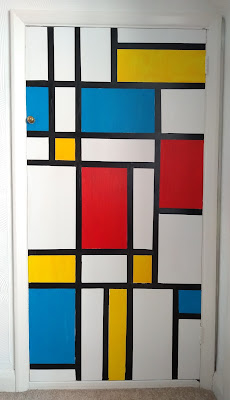We decided to restart our in group monthly challenge, this time we've decided not to restrict ourselves to photography and have any media, but on a theme and there is no obligation for members to take part as we obviously have busy lives and other commitments, but sometimes we also as artists find it useful to have a prompt as a basis to start from.
February 2023 Boxed In
.jpg) The making process was fairly similar to how I work normally when making a collage, but much quicker, with minor amounts of planning. In general, it takes several weeks or months for my ideas to evolve. Also, I rarely make 3D works, so in that way it was also different."
The making process was fairly similar to how I work normally when making a collage, but much quicker, with minor amounts of planning. In general, it takes several weeks or months for my ideas to evolve. Also, I rarely make 3D works, so in that way it was also different." Joan Hobson, took up our monthly challenge for February as an opportunity to give some small doors in her house a Mondrian style makeover, and she even made a couple of sculptural pieces from every piece of tape that went into the process!
My starting point was a humble, slightly battered but precisely made early 20th Century wooden box, brown stained and varnished. Perhaps it had a former life containing important household papers, or maybe ‘emergency’ cash or notes. Now it suggested itself as a miniature room, a secret isolated space, but there seemed something sad about it.
I added some vintage wooden doll’s house furniture, which took over the space. Somehow a dog crept into this hostel-like room, which became its temporary refuge. But there was no door in or out.
Dogs see the world differently. Their vision takes in only blues, yellows and greys whilst reds, orange and greens are invisible to them. This dog is literally ‘boxed in’ and unable to get out, deprived of comfort, companionship and visual familiarity with the environment.
Dogs are social animals, like people. They always need to be involved with others and have a defined role in a family group or pack. Sometimes our life is forced into restriction, we can glimpse the freedom, light and air we crave, but are unable to access it.

.jpg)
.jpg)
.jpg)


















